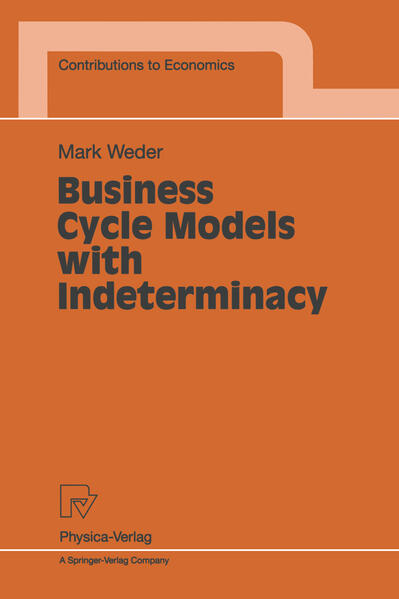
Zustellung: Mi, 09.07. - Fr, 11.07.
Versand in 2 Tagen
VersandkostenfreiThree original models which explain business cycles as a result of self-fulfilling expectations are presented. The models are founded on the structure of dynamic general equilibrium theory. Market power and increasing returns to scale are introduced which allow indeterminancy of the Rational Expectations equilibria to be obtained. Unlike the majority of existing literature on this subject, the departures from perfect markets and constant returns presented in these models are very low and, more importantly, at a realistic level to achieve the respective results. It is demonstrated in all of the presented models that stylized facts of the business cycle can be reproduced.
Inhaltsverzeichnis
1 Introduction. - 1. 1 Introduction. - 1. 2 New methods of business cycle theory. - 1. 3 Business cycle models with indeterminacy. - 1. 4 Related work. - 1. 6 Appendix. - 2 Indeterminacy, Business Cycles and Modest Increasing Returns to Scale. - 2. 1 Introduction. - 2. 2 The model. - 2. 3 The equilibrium dynamics. - 2. 4 Calibration. - 2. 5 Results. - 2. 5. 1 Eigenvalues. - 2. 6 Interpretation. - 2. 7 Second moments. - 2. 8 Conclusion. - 2. 9 Appendix. - 3 Self-Fulfilling Prophecies and Business Cycles in a Two-Sector Stochastic Optimal Growth Model. - 3. 1 Introduction. - 3. 2 The model. - 3. 3 The equilibrium dynamics. - 3. 4 Calibration. - 3. 5 Results. - 3. 6 Conclusion. - 3. 7 Appendix. - 4 Animal Spirits, Technology Shocks and the Business Cycle. - 4. 1 Introduction. - 4. 2 The model. - 4. 3 The equilibrium dynamics. - 4. 4 Calibration. - 4. 5 Results. - 4. 6 Business cycle properties. - 4. 7 Conclusion. - 4. 8 Appendix. - 5 Conclusion. - 6 Bibliography.
Mehr aus dieser Reihe
Produktdetails
Erscheinungsdatum
19. Januar 1998
Sprache
englisch
Auflage
Softcover reprint of the original 1st edition 1998
Seitenanzahl
192
Reihe
Contributions to Economics
Autor/Autorin
Mark Weder
Verlag/Hersteller
Produktart
kartoniert
Gewicht
287 g
Größe (L/B/H)
229/152/11 mm
ISBN
9783790810783
Entdecken Sie mehr
Bewertungen
0 Bewertungen
Es wurden noch keine Bewertungen abgegeben. Schreiben Sie die erste Bewertung zu "Business Cycle Models with Indeterminacy" und helfen Sie damit anderen bei der Kaufentscheidung.
































